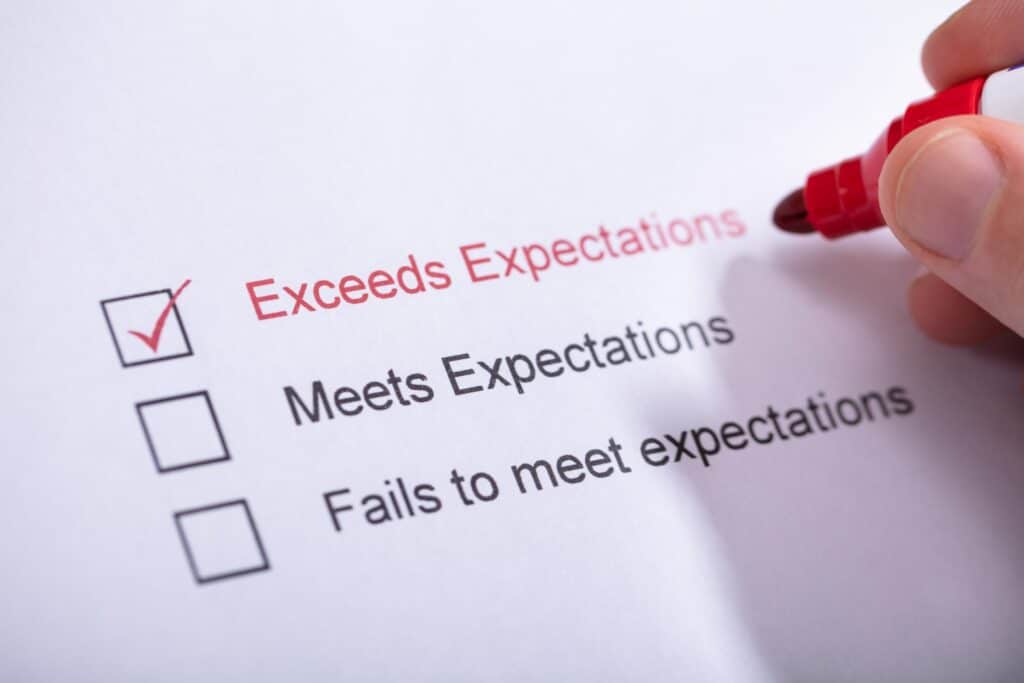Understanding what your customers really want
Great expectations
Great expectations
Understanding what your customers really want

Organisations spend a lot of time trying to solve complex and volatile problems relating to customer expectations.
In this blog we will look at one of the leading techniques for establishing what customers actually want. First, let’s consider two scenarios.
Scenario A: You log in to your favourite takeaway site to order your go to dish; Char Sui Pork. You do not even have to search for it as it’s always there in your favourites. Within three clicks it’s paid for, the order is confirmed, you can track its progress and it arrives on time.
Scenario B: Your annual subscription to a popular retail site ensures next day delivery. Your sister’s birthday is tomorrow and you’ve forgotten to buy her a present. You order a gift assuming it will be delivered ahead of her birthday lunch. It doesn’t arrive.
These two scenarios represent stories of expectations being exceeded and expectations failing to be met. Understanding what customers see as an expected standard helps organisations prioritise what they should focus on. One model which helps to map customer expectations is the Kano model. This model by Noriaki Kano originated in Japan in the 1980s and is based on three principles:
- Value attracts new customers
- Quality boosts customer retention
- Innovation is necessary to maintain competitive advantage
So, when we are building a product, we need to test it by asking two critical questions:
(1) How would you feel if you had it?
(2) How would you feel if you did not have it?
This allows us to gain an understanding of the impact on the human emotions that inform decision making. Will it lead to customers abandoning a purchase or will they be sharing your cool feature on their WhatsApp groups? Once we have established expectations, Kano advocated categorising them into the following five categories:
(1) Basic: Baseline features that every product in the genre has. These features will never delight customers but will frustrate them if they aren’t present. E.g. Doors on a house or the ability to view order status on a retail site.
(2) Performance: These are the features that customers take into consideration when making decisions and will increase customer satisfaction, the better they are implemented. They will improve satisfaction if they are there and they will negatively impact it if they are absent. E.g. Camera quality on a phone or fuel efficiency on a car.
(3) Excitement: Features that customers do not anticipate. If they aren’t there it will not detract from their experience but if they are they can truly delight the customer. While the benefit of these features can be short-lived they can lead to word of mouth recommendations and they tend to eventually become the norm. E.g. Instant refunds before returns are processed.
(4) Indifferent: These features garner no response from the customer whether they are there or not. E.g. What the internal fuel cap looks like on your car.
(5) Reverse: A reverse feature brings satisfaction through its absence and creates negative emotion through its presence. E.g. Ads on Facebook or multiple sign-ons.
This diagram illustrates how satisfaction levels can change over time, according to the Kano Model.
Understanding the Kano Model is critical but its value is limited if used at the wrong time. Kano theorised that customer expectations are volatile and ever changing and described them as a ‘wicked problem’.
For example, 10 years ago smartphone features were new and exciting and although data problems were frustrating, they were also accepted. Now customers expect much more. They need to be able to pay with their phones, they want it to include a professional quality camera and offer a permanently strong signal.
This constantly developing situation necessitates an agile approach to customer research, continuously receiving feedback through quantitative and qualitative data collection about customer expectations. This is required throughout the product life cycle and also demands a will for organisations to constantly reflect on where they are against expectations and the business cases for further investment.
Having an understanding of customer expectations throughout the organisation is critical. Once you have gone to the trouble of getting that information, then you need to act on it to improve your products and processes.
If you would like to discuss this further please get in contact.

